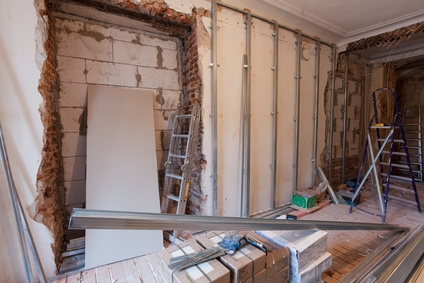Landlord Insurance: Why You MUST Get Your Buildings Reinstatement Value Right
Published on November 13, 2017 by Sarah Mac

As a landlord, your property is your income, and of course you’ll want to do all you can to protect it.
Insurance wise you are no doubt geared up with all the landlord cover you need, including buildings insurance. Buildings insurance is vital to ensure you are in a position to recover from property damage following a fire, flood, storm or vandalism, all of which prove a heightened risk for a landlord.
If you are relying on this cover however, you’ll need to make sure you are extremely careful when quoting your buildings reinstatement value, otherwise known as the Declared Value. Here’s why.
What is the Buildings Reinstatement Value?
The reinstatement or Declared Value is something that is commonly misquoted when arranging buildings insurance. Many people think it is the same as the market value of the property, or the price paid for it when purchased. However, this is certainly not the case.
Reinstatement value actually refers to the cost of completely rebuilding a property following a disaster that totally wipes it out. Whilst it includes the actual rebuild, there are numerous other costs included in this value such as the removal of debris, the clearance of the site and surveyor and architect fees.
What Happens When the Reinstatement Value is Mis-Quoted?
Failure to quote the correct rebuild value could render you underinsured. This means the insurer will only pay a proportion of the total rebuild cost. Say for example you insure your rental property for a reinstatement value of £200,000. However, the actual cost to reinstate, including clearing the site and calling in surveyors and architects together with all the legal fees involved works out to £400,000. The maximum you will be paid out is 50 per cent, or £200,000.
Whilst it may be tempting to under-quote on your Declared Value in order to keep your premium down, it is clearly a false economy to do so. How would you make up the outstanding deficit if a situation actually arose where you needed to make a reinstatement claim?
So that’s the importance of getting the reinstatement value right, but how to calculate it?
How to Calculate Your Buildings Reinstatement Value
Some landlords refer to the reinstatement value quoted on a recent mortgage offer, which is fine if there is a mortgage involved. You can also use the Building Cost Information Service (BCIS) calculator provided by the Royal Institution of Chartered Surveyors (RICS).
However, the only true way of calculating an accurate reinstatement value is to bring in a qualified buildings surveyor. Their inspection will uncover precisely how much you need to insure yourself for. This figure can be professionally relied upon and will be trusted by your insurer. Do make sure though that it is reviewed periodically, because inflation is likely to drive up rebuild costs over time.
Is ‘Sum Insured’ the same as Declared Value or Reinstatement Value?
Sum Insured is different from Declared Value. The Declared Value represents the full reinstatement value at the commencement of the insurance period. The Sum Insured, on the other hand, is the Declared Value plus an inflation provision. This provision usually comes in at between 15 and 50 per cent. It provides the insured party with cover for a rise in costs due to inflation that could affect things like construction, labour, materials, design and planning.
Key Points to Remember
Always ensure you get your reinstatement value (Declared Value) right. Never use guesswork: be sure to take expert advice.
Remember that a professionally calculated reinstatement value could well save you money, because it may reveal that you have over-quoted on your policy and are as a result paying too high a premium.

